Abstract
This communication describes the use of micro-electrophoresis in studying the changes in ascites tumour cells exposed to antibodies and complement.
Treatment of the cells with rabbit antibody led to a change in electrophoretic mobility consistent with a surface adsorption of γ-globulin. The addition of complement led to a reduction in this electrophoretic effect of antibody. Treatment of the cells with neuraminidase, which produced a marked fall in their electrophoretic mobility, did not alter the effect of rabbit antibody and complement on the cells.
Incubation with iso-antibody, in the presence or absence of complement, did not alter the mobility of the ascites cells measured at pH 7.0.
The addition of 0.01 M calcium chloride to the electrophoresis medium produced a fall in mobility of the cells exposed to either antibody preparation in the presence of complement. Therefore, although iso-antibody and complement did not produce direct changes in cell mobility, changes in the cell surface could be detected by electrophoresis in the presence of calcium ions.
The possibility is discussed that, during immune cytolysis, unmasking of phosphate groups of phospholipids might take place in the cell surface.
Full text
PDF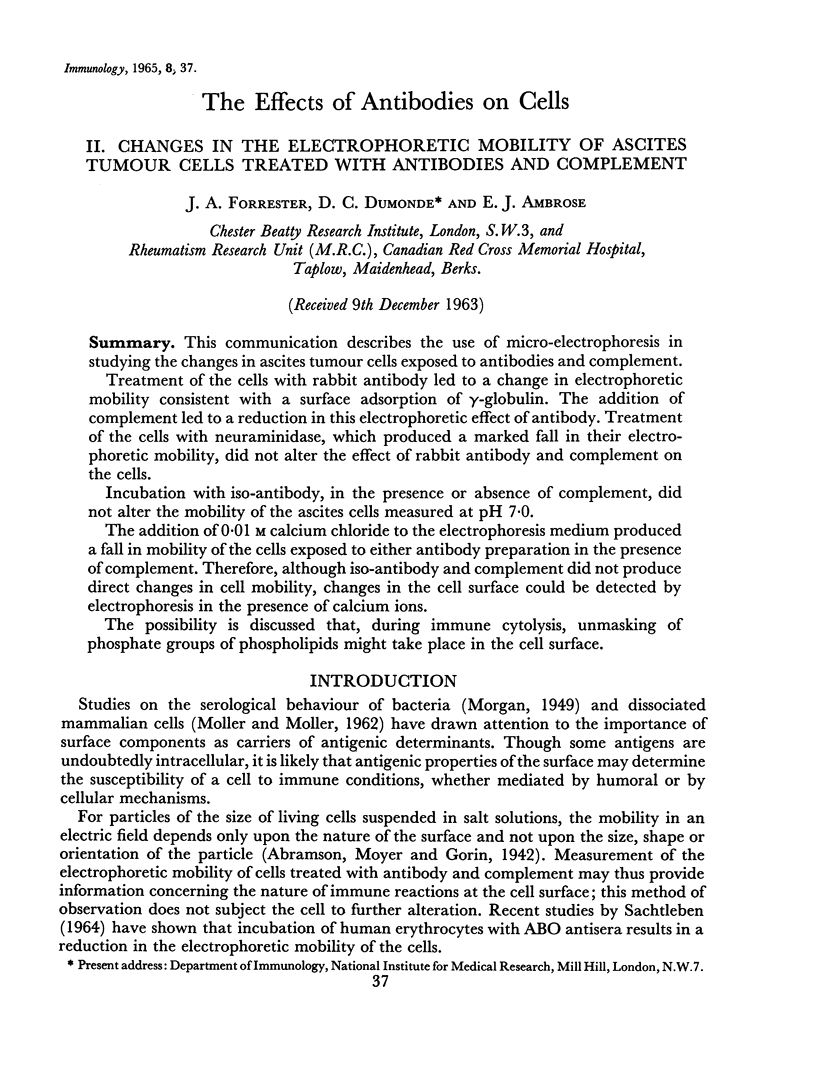
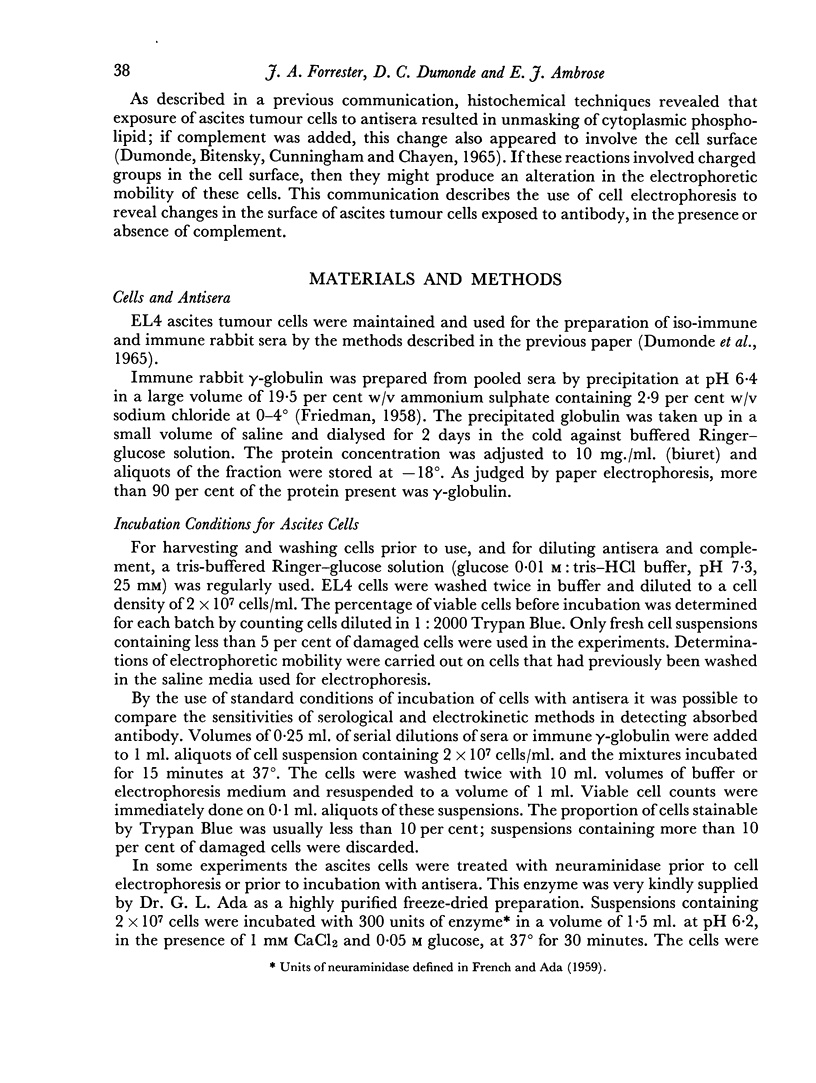
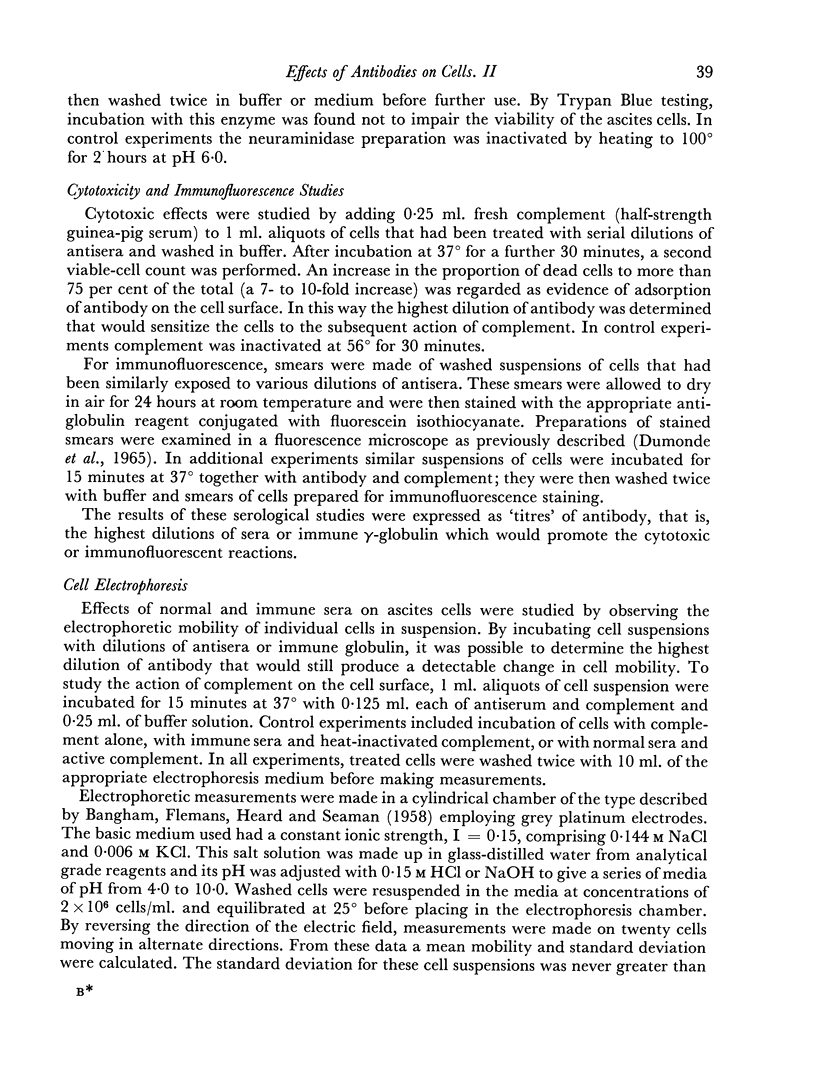

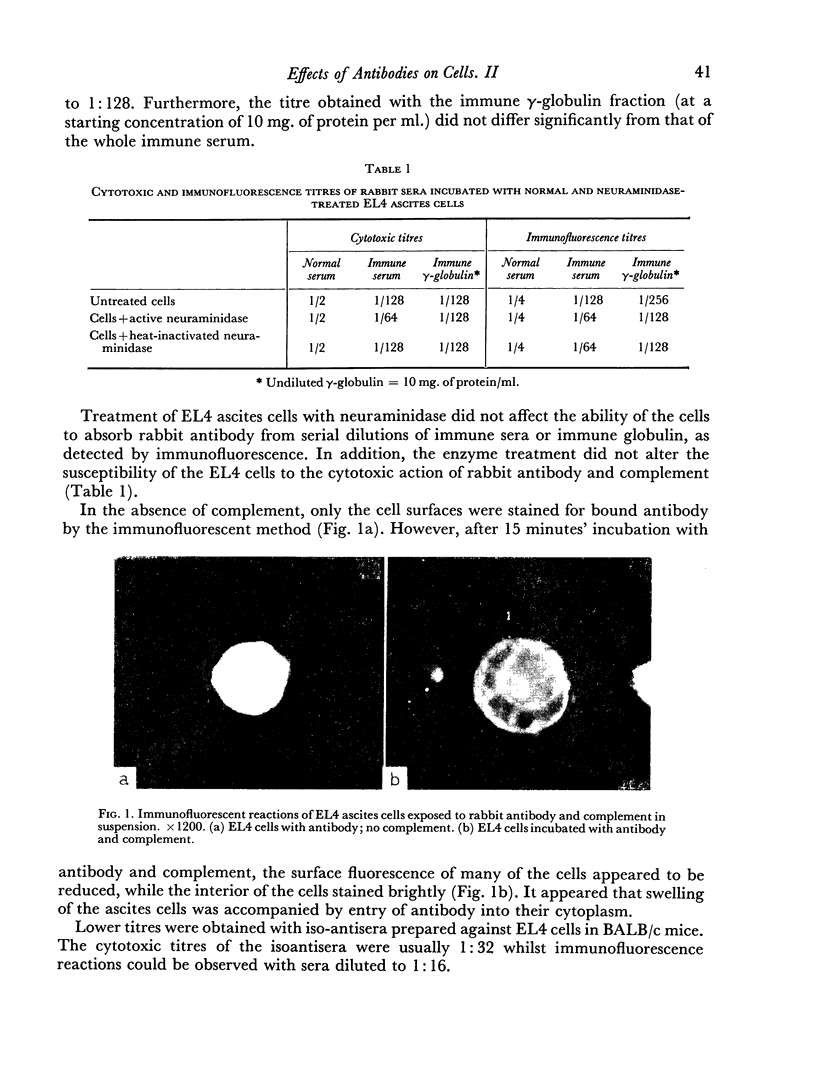
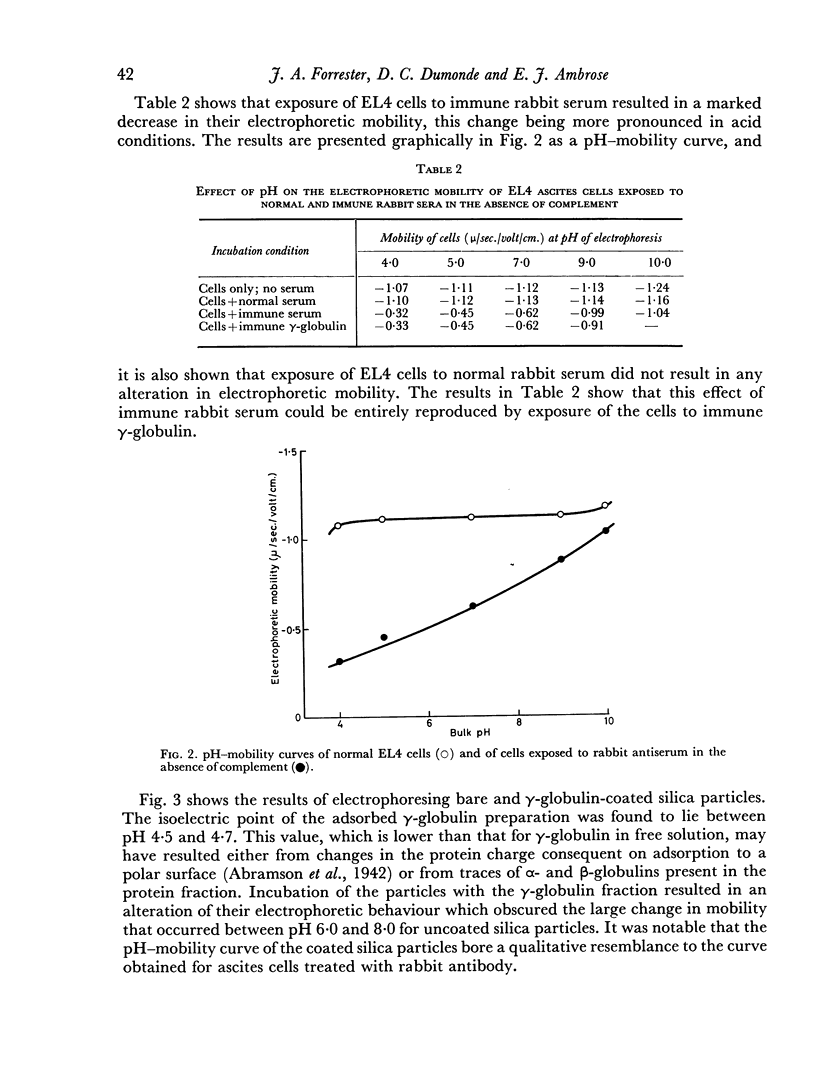
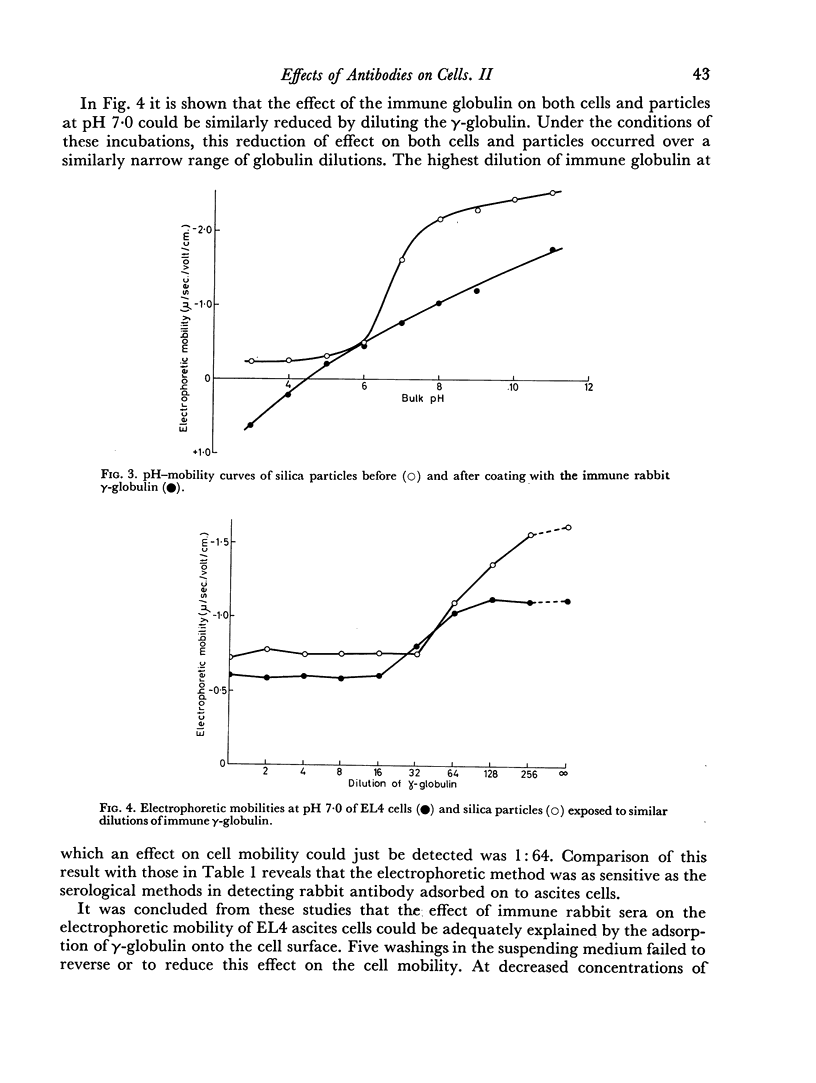
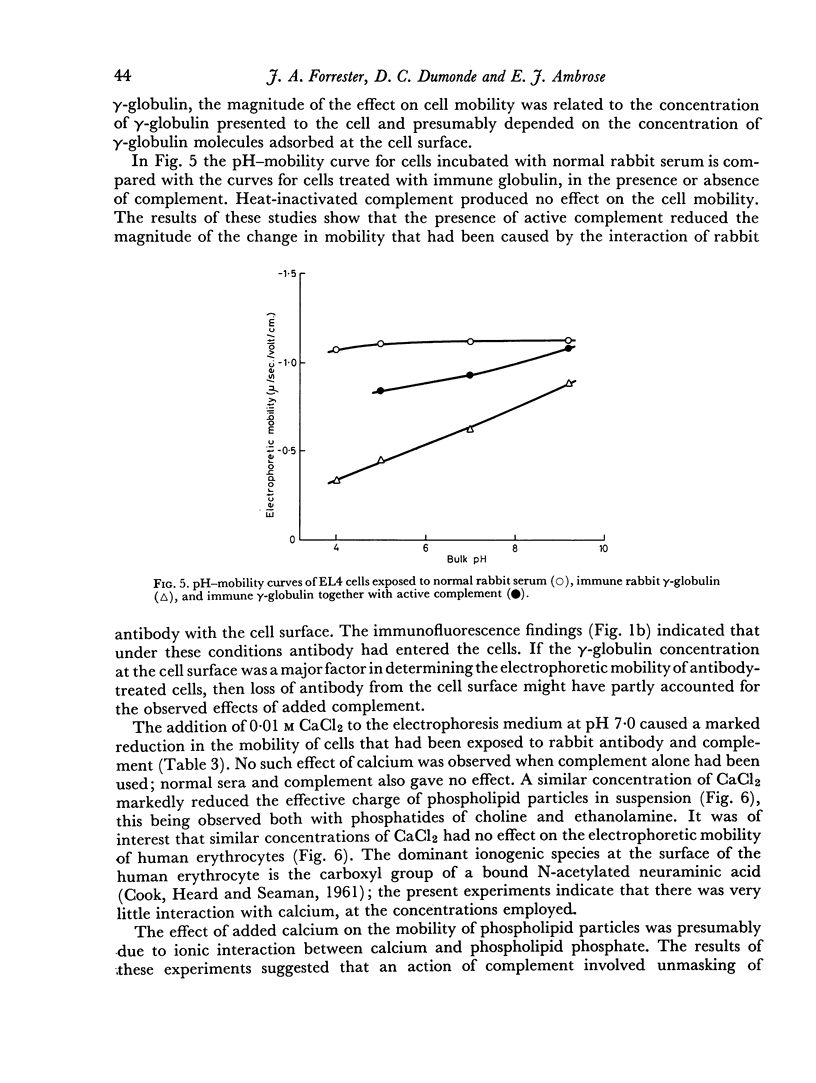
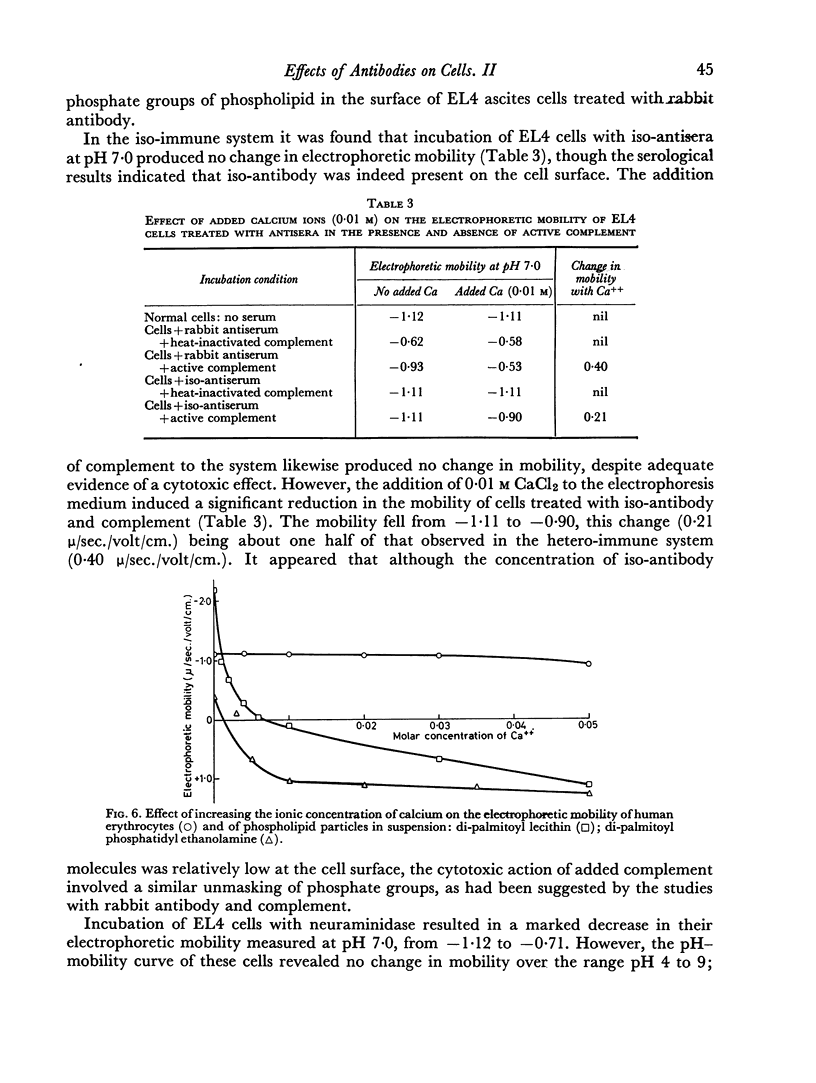

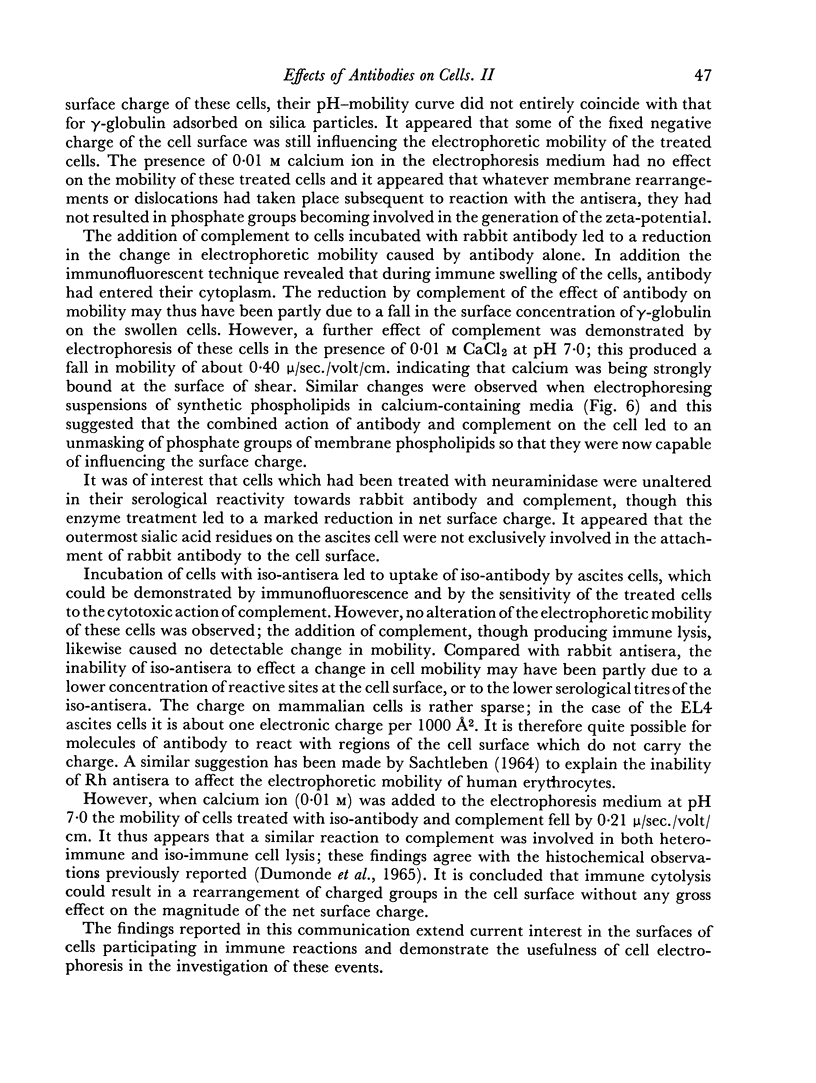
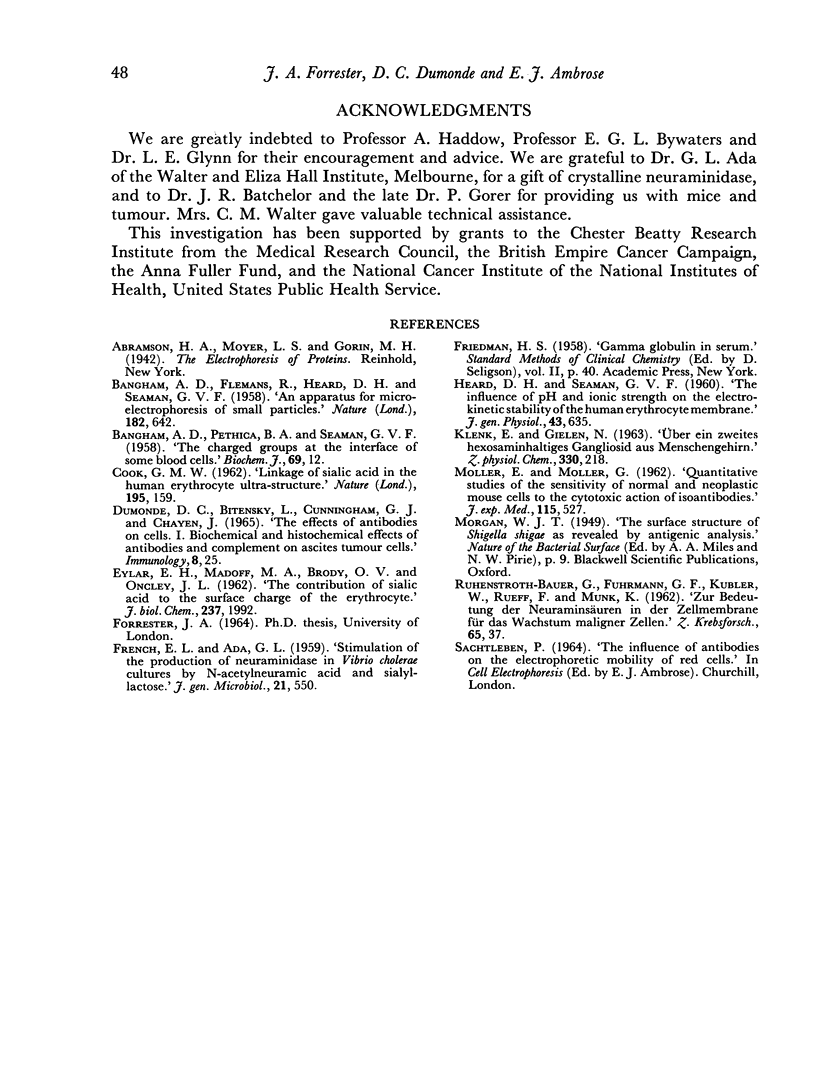
Images in this article
Selected References
These references are in PubMed. This may not be the complete list of references from this article.
- BANGHAM A. D., HEARD D. H., FLEMANS R., SEAMAN G. V. An apparatus for microelectrophoresis of small particles. Nature. 1958 Sep 6;182(4636):642–644. doi: 10.1038/182642a0. [DOI] [PubMed] [Google Scholar]
- BANGHAM A. D., PETHICA B. A., SEAMAN G. V. The charged groups at the interface of some blood cells. Biochem J. 1958 May;69(1):12–19. doi: 10.1042/bj0690012. [DOI] [PMC free article] [PubMed] [Google Scholar]
- COOK G. M. Linkage of sialic acid in the human erythrocyte ultra-structure. Nature. 1962 Jul 14;195:159–161. doi: 10.1038/195159a0. [DOI] [PubMed] [Google Scholar]
- DUMONDE D. C., BITENSKY L., CUNNINGHAM G. J., CHAYEN J. THE EFFECTS OF ANTIBODIES ON CELLS. I. BIOCHEMICAL AND HISTOCHEMICAL EFFECTS OF ANTIBODIES AND COMPLEMENT ON ASCITES TUMOUR CELLS. Immunology. 1965 Jan;8:25–36. [PMC free article] [PubMed] [Google Scholar]
- EYLAR E. H., MADOFF M. A., BRODY O. V., ONCLEY J. L. The contribution of sialic acid to the surface charge of the erythrocyte. J Biol Chem. 1962 Jun;237:1992–2000. [PubMed] [Google Scholar]
- FRENCH E. L., ADA G. L. Stimulation of the production of neuraminidase in Vibrio cholerae cultures by N-acetylneuraminic acid and sialyl-lactose. J Gen Microbiol. 1959 Dec;21:550–560. doi: 10.1099/00221287-21-3-550. [DOI] [PubMed] [Google Scholar]
- HEARD D. H., SEAMAN G. V. The influence of pH and ionic strength on the electrokinetic stability of the human erythrocyte membrane. J Gen Physiol. 1960 Jan;43:635–654. doi: 10.1085/jgp.43.3.635. [DOI] [PMC free article] [PubMed] [Google Scholar]
- KLENK E., GIELEN W. [On a 2d hexose-containing ganglioside from human brain]. Hoppe Seylers Z Physiol Chem. 1963 Mar 10;330:218–226. [PubMed] [Google Scholar]
- MOLLER E., MOLLER G. Quantitative studies of the sensitivity of normal and neoplastic mouse cells to the cytotoxic action of isoantibodies. J Exp Med. 1962 Mar 1;115:527–553. doi: 10.1084/jem.115.3.527. [DOI] [PMC free article] [PubMed] [Google Scholar]
- RUHENSTROTH-BAUER G., FUHRMANN G. F., KUEBLER W., RUEFF F., MUNK K. [On the importance of neuraminic acid in the cell membrane for the growth of malignant cells]. Z Krebsforsch. 1962;65:37–43. [PubMed] [Google Scholar]



